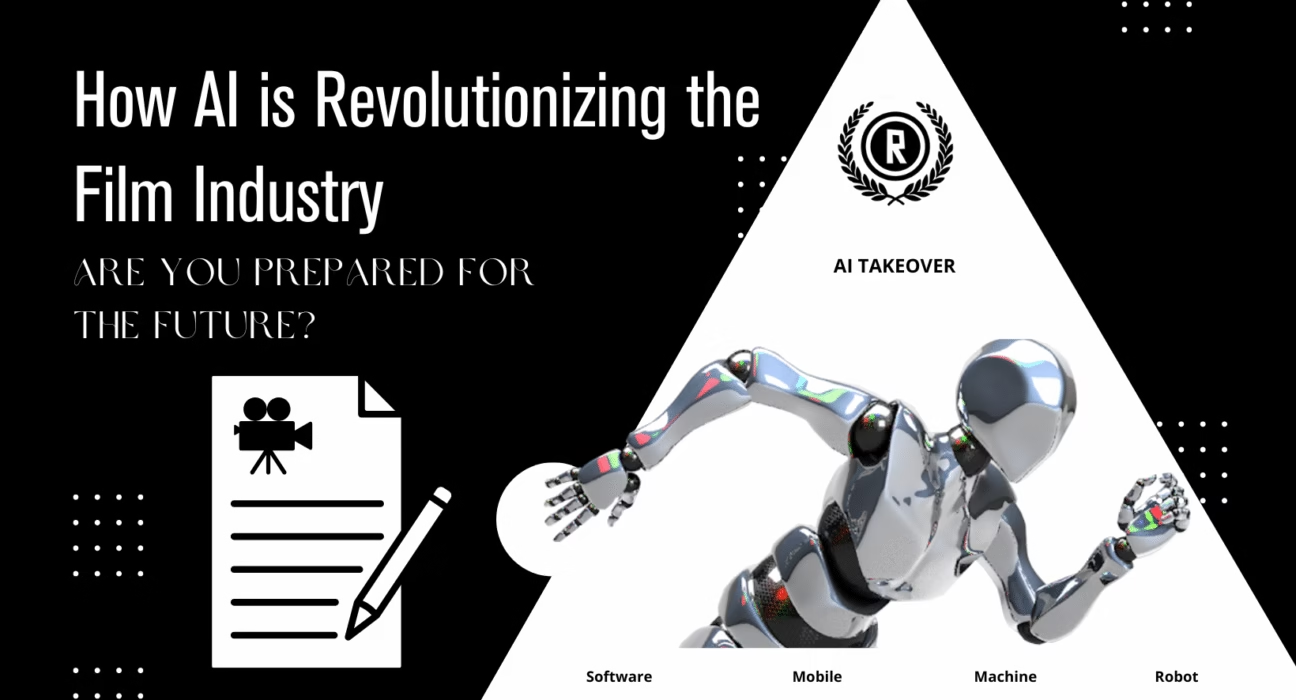Devin AI: Mind-Blowing AI-Powered CGI in Film Production
Estimated reading time: 7 minutes
Key Takeaways
- Devin AI, developed by Cognition AI, is presented as the world’s first fully autonomous AI software engineer.
- It aims to handle entire development projects, from planning to execution and debugging.
- Early demonstrations showcased impressive capabilities, leading to significant industry buzz and speculation.
- Real-world testing by developers has revealed both its strengths in certain tasks and significant limitations in others.
- Its impact on the software engineering profession is likely to be more nuanced – acting as a powerful tool rather than a complete replacement.
Table of contents
- Devin AI: The Rise of the AI Software Engineer
- Key Takeaways
- What is Devin AI?
- The Bold Claims and Initial Reception
- Devin in Action: What the Demos Showed
- Real-World Testing: Developer Experiences
- Benchmarks: SWE-Bench and its Implications
- The Debate: Hype vs. Reality
- The Future of AI and Software Engineering
- Integrating Devin (or Similar Tools) into Workflows
- Frequently Asked Questions
In the rapidly evolving landscape of Artificial Intelligence, few announcements have generated as much commotion and debate as the introduction of Devin AI. Touted as the world’s first AI software engineer, Devin promises a paradigm shift, claiming the ability to handle complex coding projects from start to finish. But what exactly is Devin, what capabilities does it claim, and how does it perform when put to the test by the very engineers it’s meant to assist (or perhaps, replace)? Let’s peel back the layers of hype and delve into the reality of this ambitious AI project.
What is Devin AI?
Devin AI is the flagship product from a startup called Cognition AI. Unlike existing AI coding tools like GitHub Copilot or ChatGPT plugins, which primarily serve as powerful assistants or code generators, Devin is designed to be *autonomous*. It operates within its own sandboxed environment, equipped with a shell, code editor, and browser, allowing it to:
- Plan and execute complex software engineering tasks.
- Write, debug, and deploy code.
- Learn from its mistakes.
- Collaborate with the user, reporting on its progress and accepting feedback.

The vision is that Devin can be given a natural language prompt describing a project or bug fix, and it will autonomously figure out the necessary steps, implement them, and deliver a working solution. This goes significantly beyond auto-completion or generating snippets; it’s about handling the *entire* software development lifecycle for specific tasks.
The Bold Claims and Initial Reception
Cognition AI launched Devin with significant fanfare, accompanied by videos showcasing its purported abilities. The headline claim was striking: Devin had successfully passed challenging engineering interviews and completed practical jobs on Upwork. This immediately ignited intense discussion across the tech community. Was this the moment AI truly became a peer to human engineers? Could this tool significantly accelerate development, or perhaps even automate large portions of it? The potential implications were immense, sparking both excitement and anxiety.

Devin in Action: What the Demos Showed
The initial demonstrations released by Cognition AI were undeniably impressive. They showed Devin tackling tasks such as:
- Debugging a complex codebase.
- Setting up and training a machine learning model.
- Building a simple interactive website.
- Handling pull requests and responding to bug reports.

Watching Devin operate its own terminal and editor, it gave the impression of a truly capable digital collaborator. It would methodically type commands, browse documentation, write code, and debug errors, explaining its process along the way. These curated examples painted a picture of an AI capable of autonomous problem-solving on a level not seen before.
Real-World Testing: Developer Experiences
Following the initial announcement, a select number of developers and researchers were given access to Devin. Their experiences, shared online and in various tech analyses, provided a crucial reality check. While some tasks were handled competently, the full autonomy and capability shown in the demos didn’t always translate directly to arbitrary real-world scenarios.
Developers reported that Devin could:
- Successfully complete certain well-defined, smaller tasks.
- Assist in debugging by identifying potential issues.
- Generate boilerplate code or set up project structures.
However, limitations became apparent:
- Struggling with ambiguous instructions or poorly defined problems.
- Getting stuck in loops or failing to recover from errors without human intervention.
- Generating incorrect or inefficient solutions for complex tasks.
- Lacking the nuanced understanding required for large, established codebases.
- Being significantly slower than a human developer for many tasks.

As one developer put it:
“Devin is impressive in moments, but it’s far from a drop-in replacement for an engineer. It requires careful guidance and oversight, and sometimes, explaining the problem to Devin takes longer than just fixing it myself.”
This feedback suggested Devin is a powerful tool, but one that requires a human operator to supervise, guide, and often correct its work, particularly for anything beyond straightforward tasks.
Benchmarks: SWE-Bench and its Implications
A key part of Cognition AI’s claim involved Devin’s performance on the SWE-Bench benchmark. This benchmark evaluates models on their ability to resolve real-world software issues from GitHub repositories. Cognition stated Devin achieved a 13.86% end-to-end success rate on SWE-Bench, significantly outperforming previous models which were often below 5%.

While 13.86% might seem low at first glance, it was presented as a major leap forward for autonomous AI on complex coding tasks. However, scrutiny followed. Some researchers pointed out potential issues with how the benchmark was evaluated or the specific subset of tasks used. Critiques suggested the real-world complexity of many issues might still be beyond Devin’s current capabilities. The debate highlighted the difficulty in creating benchmarks that truly capture the multifaceted nature of software engineering.
Regardless of the exact percentage, achieving *any* level of autonomous problem resolution on such tasks was noteworthy, but the figure itself became a point of contention in the “hype vs. reality” discussion.
The Debate: Hype vs. Reality
The core debate surrounding Devin AI boils down to the gap between the initial presentation and the practical experiences of users. Critics argued that the demos were highly curated and perhaps misleadingly edited to present a level of autonomy and competence that doesn’t hold up in general use. They pointed to instances where Devin struggled or failed on tasks that seemed comparable to those shown in the promotional material.
On the other side, proponents argued that Devin, even with its limitations, represents a significant step forward. They see its current form as an early iteration of a technology that will rapidly improve. They believe that the challenges Devin faces are solvable and that future versions will get closer to the vision of a truly autonomous AI engineer. They also highlight that even as a powerful assistant, Devin offers new ways for engineers to offload tedious tasks.
Key points of debate include:
- Definition of “Autonomous”: Does requiring significant human oversight still count as autonomous?
- Scope of Tasks: Can Devin handle novel problems, or is it better suited for known patterns and bugs?
- Scalability: How well does Devin perform on truly large-scale, enterprise-level projects?
- Trust and Verification: How do engineers verify the correctness and security of code generated by an autonomous AI?
It became clear that while Devin is an impressive piece of technology, the initial claims might have outpaced its current real-world capabilities. The reality is likely somewhere between the revolutionary claims and the skeptical critiques – a promising tool with specific strengths, still very much in development.
The Future of AI and Software Engineering
Regardless of Devin AI’s current state, its emergence signals a clear trajectory: AI is becoming increasingly capable of handling complex, multi-step reasoning and execution in the software development domain. This doesn’t necessarily mean human software engineers are obsolete. Instead, it suggests a future where the role of the engineer evolves.

AI tools like Devin are likely to become powerful force multipliers:
- Automating Repetitive Tasks: Freeing engineers from boilerplate code, routine bug fixes, and setup procedures.
- Enhancing Debugging: Providing sophisticated analysis and potential solutions for errors.
- Accelerating Learning: Helping developers understand new codebases or technologies faster.
- Facilitating Prototyping: Quickly generating initial versions of applications or features.
The human engineer’s role will likely shift towards higher-level tasks:
- Problem Definition: Clearly articulating complex requirements that even autonomous AI needs to understand.
- System Design: Architecting complex systems that require abstract thought and creativity.
- Strategic Planning: Deciding *what* to build and *why*.
- Oversight and Verification: Reviewing and validating AI-generated code for correctness, efficiency, and security.
- Handling Ambiguity and Novelty: Tackling truly unique problems that require human intuition and experience.
The integration of sophisticated AI tools into the software development workflow seems inevitable. The question is not *if* AI will change software engineering, but *how* and *when*.
Integrating Devin (or Similar Tools) into Workflows
For engineering teams considering adopting tools like Devin, a realistic perspective is essential. Rather than viewing it as a replacement for a human engineer, think of it as an incredibly powerful, albeit sometimes temperamental, junior colleague or specialized tool.
- Start Small: Experiment with well-defined, isolated tasks before attempting complex project integration.
- Maintain Oversight: Code generated by AI, especially autonomous AI, must be rigorously reviewed and tested.
- Provide Clear Instructions: The performance of these tools is highly dependent on the clarity and specificity of the initial prompt.
- Understand Limitations: Be aware that the AI may struggle with edge cases, domain-specific knowledge, or highly creative solutions.
- Focus on Augmentation: Use the tool to enhance human productivity, not to completely automate roles.
Successfully integrating AI software engineers will require adapting existing workflows, investing in training, and fostering a collaborative environment where humans and AI work together effectively.
Frequently Asked Questions
What makes Devin different from GitHub Copilot?
GitHub Copilot is primarily a code *assistant* offering auto-completion and code suggestions within an editor. Devin AI is designed to be an *autonomous agent* that can plan, execute, and debug entire software engineering tasks end-to-end within its own environment.

Can Devin replace human software engineers right now?
Based on current real-world testing and developer feedback, Devin is not capable of fully replacing human software engineers. It acts as a powerful tool that can handle certain tasks autonomously, but it requires human guidance, oversight, and often correction for complex or ambiguous problems.
What is SWE-Bench, and why is it relevant to Devin?
SWE-Bench is a benchmark designed to test AI models’ ability to resolve real-world software issues extracted from GitHub repositories. Cognition AI cited Devin’s performance on SWE-Bench (a 13.86% end-to-end success rate) as evidence of its advanced autonomous capabilities compared to previous models.
Is Devin AI available to the public?
As of its initial launch, Devin AI was available to a limited number of users via private access. Wider public availability and pricing models were not immediately announced, and access remains restricted.
What are the main limitations of Devin AI?
Reported limitations include struggling with unclear instructions, difficulty recovering from errors without human help, generating incorrect or inefficient solutions for complex problems, requiring significant oversight, and being slower than humans for many tasks.
How might AI like Devin impact the future of coding?
AI tools like Devin are expected to automate repetitive tasks, enhance debugging, accelerate prototyping, and potentially shift the role of human engineers towards higher-level problem-solving, design, and oversight rather than routine coding.
What kind of tasks is Devin best suited for?
Based on demonstrations and early testing, Devin appears most suited for well-defined tasks with clear instructions, smaller-scale projects, setting up environments, and potentially assisting with debugging known error patterns.






